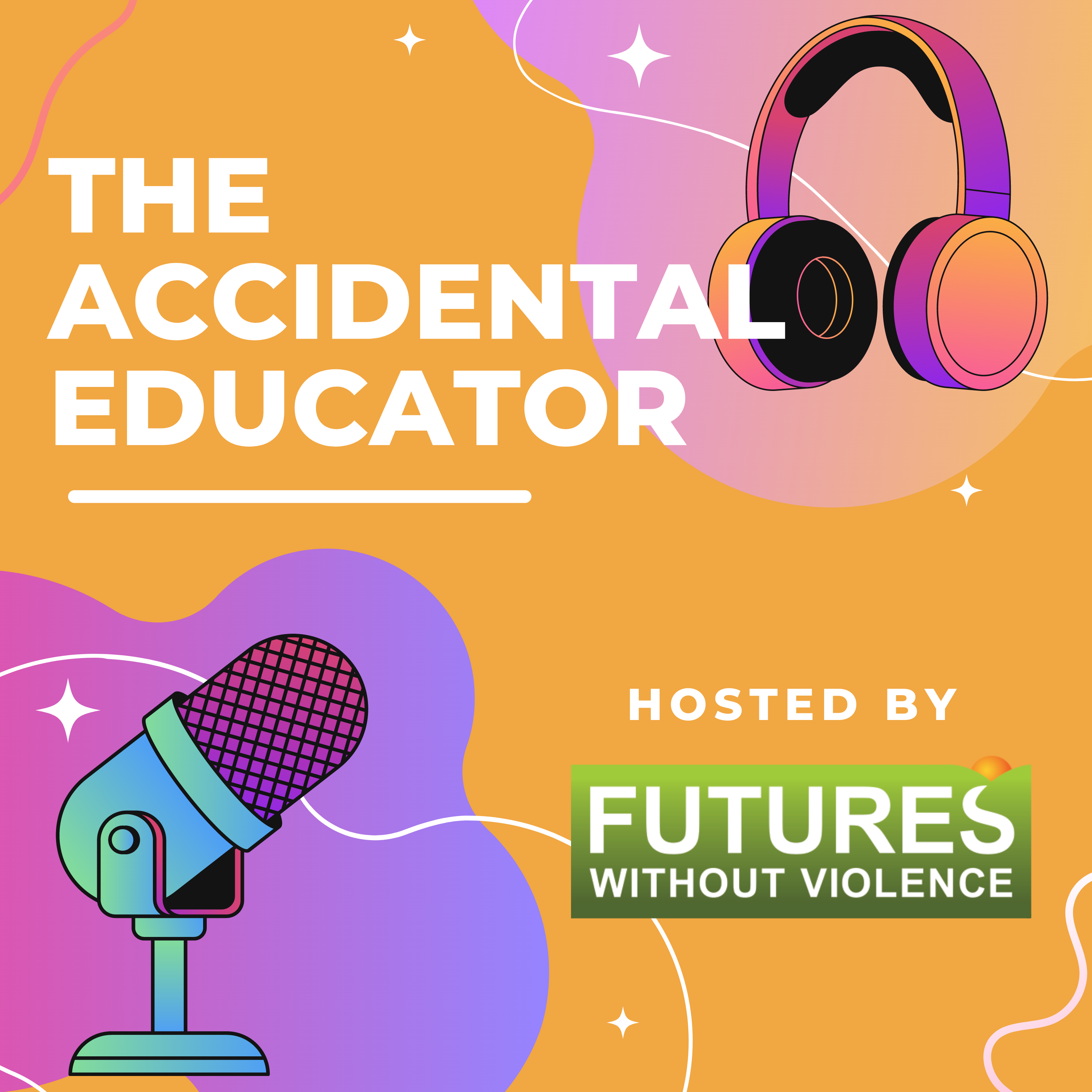Are you looking for an easy way to advance your professional knowledge during these long summer days?
Check out the extensive library of podcasts from FUTURES. From thinking about new ways to tell a story about domestic violence, to delving into the the unique issues facing a survivor who is HIV positive, to our new podcast for survivors, each episode offers insights and new ways to think about you, your work and your role in ending violence.
So pull up your favorite podcast streaming app and put the following podcasts in your queue.
The Accidental Educator
The way we present information is almost as important as the information itself. With so many new tools available, we have more opportunities to reach new audiences. The Accidental Educator teaches listeners how to become podcasters. From details about the best microphones to use, to how to tell a compelling and ethical story, this short series makes it easy to start a podcast of your own.
Who should listen?
- An advocate educator who wants to expand they way they communicate
How long are the episodes?
- About 20 minutes long
What you’ll learn includes:
- Best equipment to make a podcast
- Where to start
- Setting up your home studio
Check out an episode! How to Make a Podcast Pt.1
Aspiring Leaders Lab
This podcast series explores diverse leadership strategies that inspire professional growth. Hosts talk to leaders who share stories of resilience, leadership and passion as they seek to prevent and respond to gender-based violence.
Who should listen?
- Anyone at any level who wants to take on leadership responsibilities in order to strengthen programs for survivors
How long are the episodes?
- About 30 minutes long
What you’ll learn includes:
- Strategies to manage leadership change
- Goal setting
- Skill development
Check out an episode! Advocating for Yourself to Advance Equity and Inclusion in Services for Survivors
Expanding the Continuum
This podcast explores the intersections of HIV and intimate partner violence. Discussions are around educating health care providers to better understand and meet the unique needs of survivors who are HIV positive.
Who should listen?
- Health care professionals
How long are the episodes?
- 20-60 minutes long
What you’ll learn includes:
- Best ways to care for survivors who are HIV positive
- Accessing PrEP for survivors
- Best ways to support aging HIV survivors
Check out an episode! Building Partnerships Between HIV Care and Domestic Violence Programs
Pivot
The purpose of this podcast is in its name. It’s all about how advocates can pivot in their thinking and adjust domestic violence programming to better serve children and families, especially of color, who have experienced violence.
Who should listen?
- Advocates working to end violence against children and families
How long are the episodes?
- 20-60 minutes long
What you’ll learn includes:
- Ways to support parents
- How to engage young people
- Serving immigrant and undocumented adult and child survivors
Check out an episode! Beyond Pride: Paracticing Meaningful Care for LGBTQ Survivors
The Warm Line
This podcast provides a place for survivors to find solidarity, compassion and information.
Who should listen?
- Survivors of domestic violence, stalking, sexual assault or harassment
How long are the episodes?
- 20-60 minutes long
What you’ll learn includes:
- What to do you do if you’re experiencing gender-based violence
- Identifying economic abuse
- What it means to become a survivor
Check out the first episode and be on the lookout for more! What to Know Pt 1: The Language








